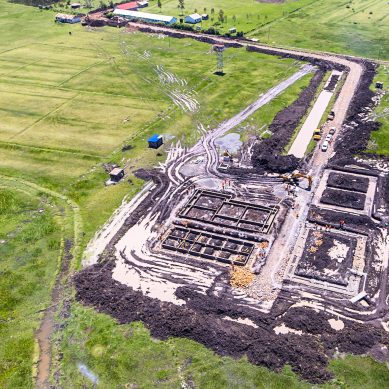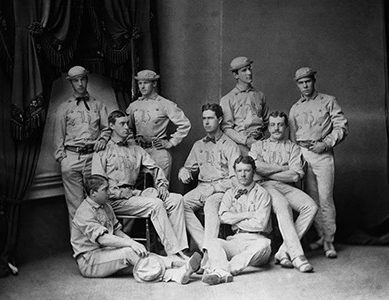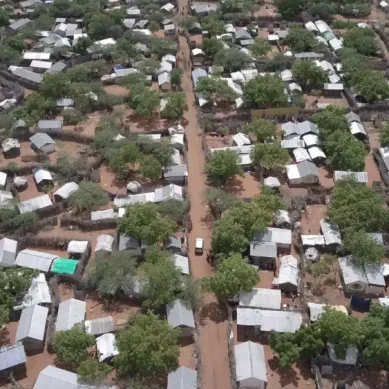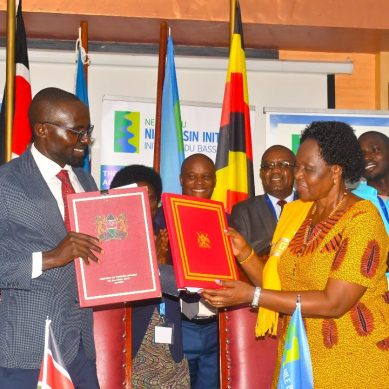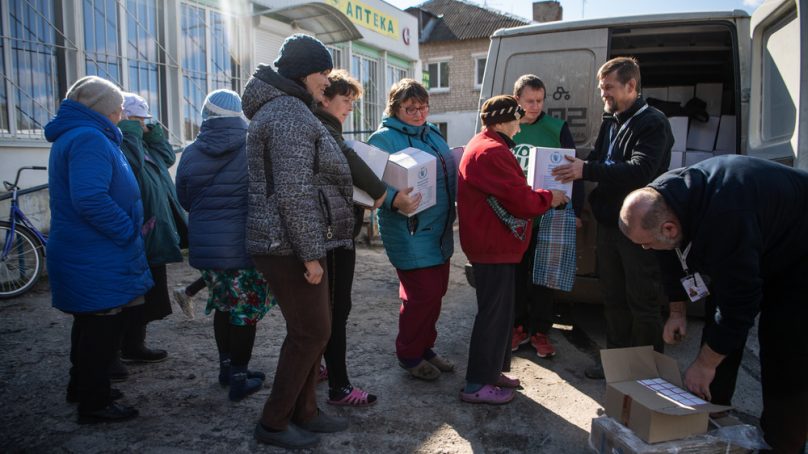
In late September, as Albina Iliushchenko drove down the familiar streets of her childhood in Izium in eastern Ukraine, she choked back tears looking at the cracked, blackened facades of apartment blocks, and at the restaurants and shops reduced to rubble.
At the elementary school where her mother used to teach, the roof had caved in and all the windows were blown out. A family was picking through the debris trying to salvage anything useful.
After Izium fell under Russian control in mid-March, Albina’s parents, along with tens of thousands of other residents, lived under Russian occupation until the city was liberated by Ukrainian forces on September 10, amid a swift series of territorial gains in the south and east of the country. Less than two weeks later, we accompanied 32-year-old Albina on her return trip to the city, which was only about 15 kilometres from the front lines.
The situation in Izium, and other liberated settlements nearby, was stark: The areas were littered with half-destroyed buildings that appeared uninhabitable, while electricity, running water, and gas for cooking and heating were scarce. Still, dozens of residents trickled out from the broken structures when volunteers or soldiers came to deliver aid.
A World Food Programme (WFP) assessment last month found that some 2.2 million people in need of assistance – including the elderly, poor and disabled – live within 30 kilometres of the frontlines. And with winter fast approaching, there are serious concerns about how people will survive in sub-zero temperatures without heat.
“We need electricity or wood, or gas – something for heating,” Vitaly, a 33-year-old father with a four-year-old child, says while standing in a small crowd gathered for a humanitarian aid delivery outside a shuttered grocery store in Izium. With no mobile network, he didn’t know when the aid would arrive, or who was providing it.
“We don’t have any water at all,” he said. “Everyone that you see here, they collected rainwater [to drink].”
Across Ukraine, an estimated 18 million people – or 40 per cent of the population – who are in need of humanitarian aid, according to the UN. A recent statement from Ukraine’s energy ministry said that more than 702,000 people remain without power and at least 621,000 lack gas, primarily in the east of the country.
Russia’s widespread bombardment of cities and civilian infrastructure across Ukraine on 10 and 11 October – the largest strikes since the beginning of the invasion in February – disrupted the ability of international aid workers to deliver supplies in the hard-hit east, according to the UN. The International Committee of the Red Cross (ICRC) and the Norwegian Refugee Council (NRC) temporarily paused on-the-ground aid distributions.
Amid the ongoing shelling and fighting, Ukrainian authorities are struggling to restore basic utilities and other essential services to hundreds of recently liberated settlements. The government is working to hand out food and humanitarian aid, and to restart the distribution of pensions – an important lifeline for the elderly population.
But the scale of need is vast, and authorities are encouraging civilians near the front lines to evacuate to avoid a “humanitarian catastrophe”, according to a recent government press release.
“The front line is still near, and the heat supply will be difficult to repair for the coming winter,” said Tetiana Turyina, a spokesperson for the Ukrainian civil-military administration in the eastern region of Donetsk, partially occupied by Russian-backed separatists since 2014.
When we visited, access to Izium was still restricted as Ukrainian authorities cleared debris, bodies and unexploded ordnance from the streets. Civilians were barred from leaving so the government could identify locals who had collaborated with the occupying forces – not uncommon in a region where pro-Russian views were prevalent before the war.
On the outskirts of town, investigators had uncovered a mass burial site containing the bodies of more than 440 people, mostly civilians with some showing clear signs of torture.
When the invasion began, Albina lost her job as a sales manager for a logistics company. To fill her time and take care of her mental health, she began meditating and threw herself into volunteering to support the war effort.
“I knew that… I must help our forces, our guys. I knew that all that I did would contribute to the day Izium would be liberated, and that the war would stop, and the day that I would meet and hug my parents would come,” Albina said.
After Izium was liberated, she jumped at the opportunity to bring her parents medicine, winter clothes, and other provisions – and to see them again.
When they met, the family couldn’t stop embracing. Even with limited supplies, Albina’s mother, Svetlana, 55, had managed to prepare a home-cooked meal, and her father, Nikolai, also 55, filled shot glasses with celebratory whisky.
Fortunately, Albina’s parents had their own well for drinking water and a generator, although fuel and food were hard to come by.
But the reality overall in Izium is grim. Only around a quarter of the pre-war population of around 45,000 remains. Power, running water and gas in the town have been cut since the beginning of March. Jens Laerke, a spokesperson for the UN’s emergency aid coordination body, OCHA, said residents who haven’t fled are “completely dependent” on humanitarian aid, resorting to bartering personal possessions and goods to survive.
- The New Humanitarian report
